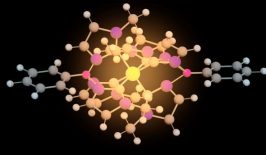Solar power is often seen as an essential solution to Earth’s climate change quandaries – providing power without burning fossil fuels and with few negative environmental side effects. However, although solar power has undergone a revolution of sorts in recent years – with increased adoption, decreasing costs and improved efficiency – the power source also comes with some serious drawbacks.
Firstly, solar power is only effective in clear, sunny conditions, while even on such days its power generation is limited by the solar cell’s orientation. Most solar power cells are static, meaning they only receive the most powerful sun rays for a small portion of the day. Once the sun moves across the sky, their efficiency plummets.
Now a team from the University of California in Los Angeles have created the first solar cell which has phototropic abilities – that is the ability to track the sun across the sky on its daily journey. To achieve this, researchers Ximin He and Xiaoshi Qian developed a new polymer and took direct inspiration from natural plant life. In nature, photo- and heliotropism is facilitated by the stem of a plant or flower growing and retracting in response to the presence or lack of sunlight. Their creation, dubbed the SunBOT – for SUNflower-like Biomimetic Omnidirectional Tracker – uses a similar method.
Literal STEM Research
The team’s device consists of a ‘stem’ around a millimetre thick which is topped with a ‘flower’ coated in photovoltaic materials. Around the stem is a nanomaterial polymer which is able to convert light into heat. The heated sections of the stem retract, allowing the flower of the cell to move towards the light source and essentially track its movement. Once out of the sunlight, the heated section cools, preventing it from retracting too far. This constant heating and cooling allows the SunBOT to track the movement of the light source seamlessly. The video below shows the range of angles the SunBOT stem can move to, and the speed at which it can do this:
To build their prototypes, the team used a combination of gold nanoparticles and a hydrogel, however subsequent tests revealed other materials, such as reduced graphene oxide and liquid crystalline polymers, could also potentially be used. This creates opportunities for refining the process, potentially reducing costs and allowing for mass production.
According to He, traditional solar panels can only hope to receive 24 percent of the sun’s rays on any given day. The SunBOT, however, could capture as much as 90 percent, dramatically boosting the potential of solar panels’ efficiency. In the future, one possible application would be to line up SunBOTs in rows to cover surfaces such as solar panels, to help increase their efficiency and maximise their power-harvesting potential. While solar tracking systems already exist (that pivot solar panels in line with the movements of the sun), these systems often have high upfront costs, are very heavy (meaning they’re not suitable for rooftop solar) and require a lot of energy to run. SunBOTS, however, move to face the light of their own accord – with no added energy needed.
To test their invention, the University of California team submerged several SunBOTs in water with only their ‘flowers’ appearing above water. The researchers then exposed the SunBOTs to sunlight and recorded the amount of water vapour generated by the heating of the stems. They discovered that the SunBOTs generated over 400 percent more vapour than static solar panels – suggesting they are much more efficient at generating heat and therefore power.
While the team envisions fields of SunBOTs being used to generate electricity for buildings, their applications do not end there. There is also the potential that such phototropic technology could be used in many diverse fields, as the research paper released in Nature Nanotechnology states:
“This work may be useful for enhanced solar harvesters, adaptive signal receivers, smart windows, self-contained robotics, solar sails for spaceships, guided surgery, self-regulating optical devices, and intelligent energy generation (for example, solar cells and biofuels), as well as energetic emission detection and tracking with telescopes, radars and hydrophones.”
Increasingly, researchers have been turning to nature to inspire the technology of the future. We have previously heard of solar devices which replicate the process of photosynthesis and even the idea of using plants themselves to power electronic devices.






